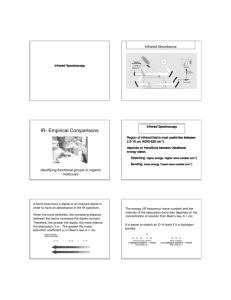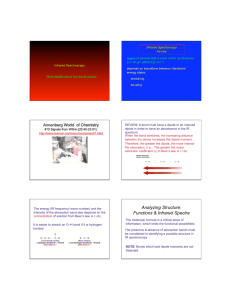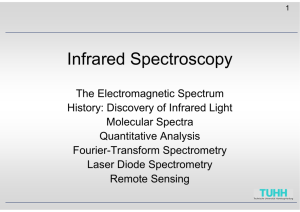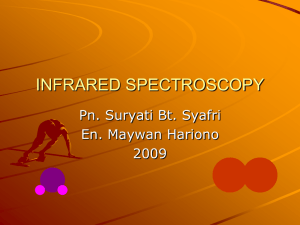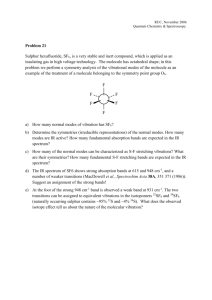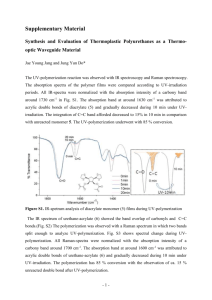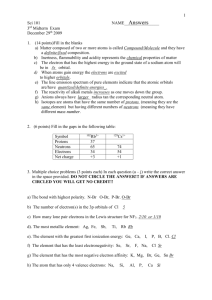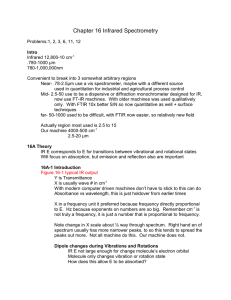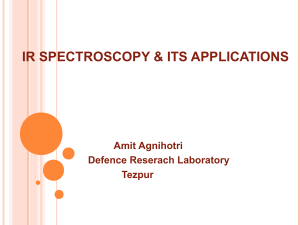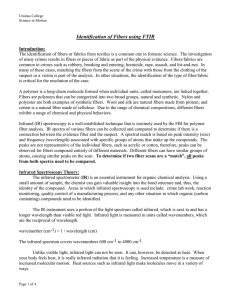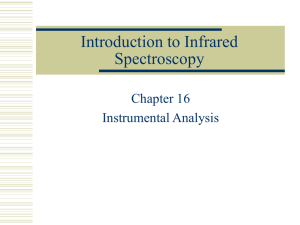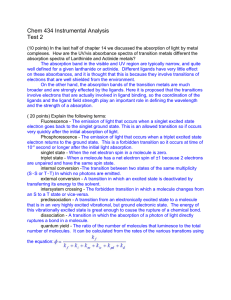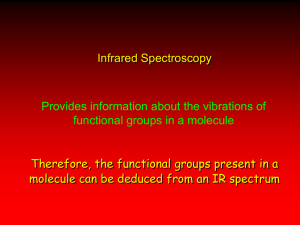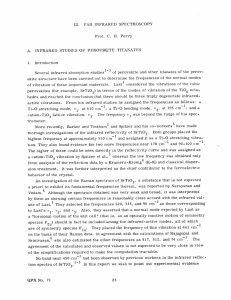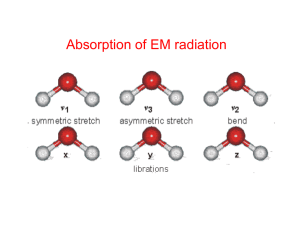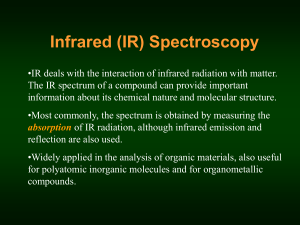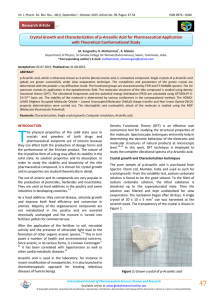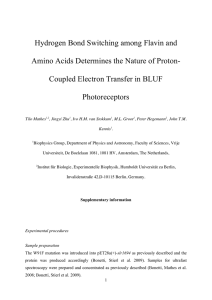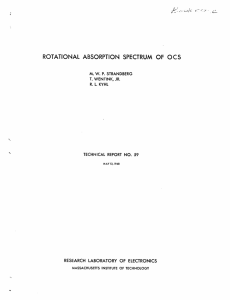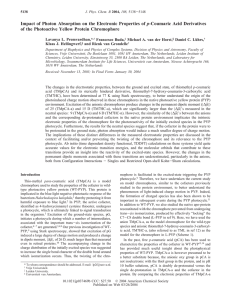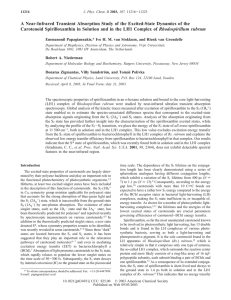INFRARED SPECTROSCOPY
advertisement
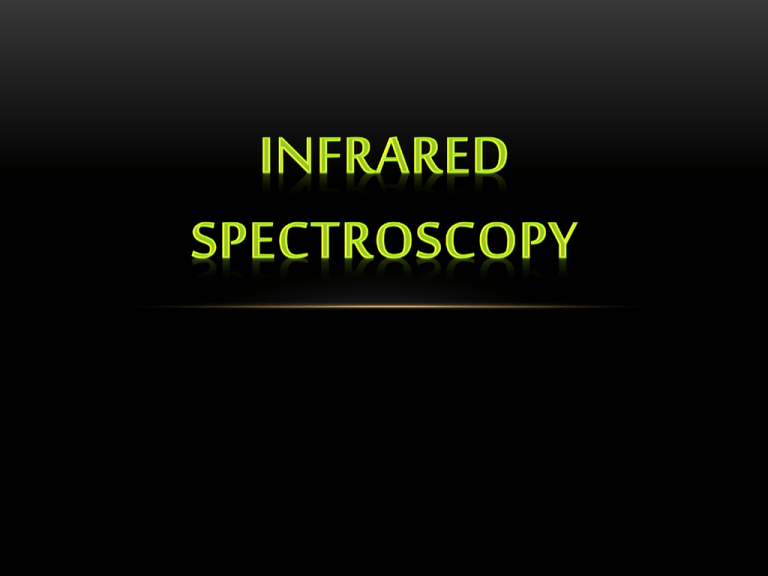
the spectroscopy that deals with the infrared region of the electromagnetic spectrum, that is light with a longer wavelength and lower frequency than visible light. http://www.nasa.gov/images/content/56638main_Infrared_Region.jpg approximately 14000-4000 cm−1 (0.8–2.5 μm wavelength) Can excite overtone or harmonic vibrations. Has high energy approximately 4000-400 cm−1 (2.5–25 μm) used to study the fundamental vibrations and associated rotationalvibrational structure. approximately 400–10 cm−1 (25–1000 μm) lying adjacent to the microwave region has low energy and may be used for rotational spectroscopy. 2.5x10-6 to 2.5x10-5 m Vibrational infared region – the portion of the infrared region that extends from 4000 to 400 cm-1 Wavenumber (v) – radiation in the vibrational infrared region. The number of waves per centimeter. Atoms joined by covalent bonds are not permanently fixed in one position, but instead undergo continual vibrations relative to each other The bond undergoing vibration must be polar. It’s vibration must cause a periodic change in the bond dipole. The greater the polarity of the bond, the more intense is the absorption. 3n – 6 (fundamental vibrations) Example: Ethanol CH3CH2OH Hexanoic acid CH3(CH2)4COOH Change in band length • Change in band angle. Data on absorption patterns of selected functional groups are collected. Characteristic IR Absorptions of Selected Functional Groups Bond Frequency (cm-1) Intensity O-H 3200-3500 Strong and broad N-H 3100-3500 Medium C-H 2850-3100 Medium to strong C≡C 2100-2260 Weak C=O 1630-1800 Strong C=C 1600-1680 Weak C-O 1050-1250 Strong Example: Determine the functional group that is likely present if a compound shown IR absorption at 1705 cm-1 2950 cm-1 absorption of IR radiation only occurs if there is a change in dipole moment the larger the change in dipole moment, the more intense the absorption band the greater the electronegativity differences between atoms in the molecule, the more polarized, the larger change in dipole moment Transmittance Wavenumber (cm-1) The sum of the number of rings and pi bonds in a molecule. Compare the number of hydrogens in the molecular formula of a compound of unknown structure with the number of hydrogen in a reference compound with the same number of carbon atoms and with no rings or pi bonds. CnH2n+2 Index of Hydrogen = (Hreference – Hmolecule) 2 Measures the attenuation of a beam of light after it passes through a sample or after reflection from a sample surface. Spectral range of 190 nm to 900 nm 190 – 400 nm, UV 400 – 750 nm, Vis Vis = 36 – 72 kcal/mol UV = >72 – 143kcal/mol • identifiable part of the molecule • responsible for any spectral feature like bands • use to deduce presence of structural fragment or element in the molecule • corresponds to a functional group, an atom or group of atoms • Molar absorptivity > 200 for UV-Vis • UV - electronic transition in 200 – 380 nm • Vis - electronic transition in 380 – 800 nm SCHEMATIC OF A WAVELENGTH-SELECTABLE, SINGLEBEAM UV-VIS SPECTROPHOTOMETER • http://www2.chemistry.msu.edu/faculty/reusch/VirtTxtJml/Spectrpy/UV-Vis/spectrum.htm

